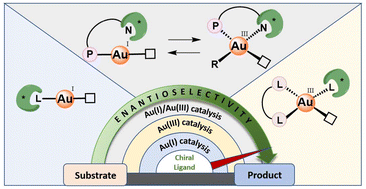Asymmetric gold catalysis enabled by specially designed ligands
Abstract
Over the past two decades, gold catalysis has witnessed a remarkable surge fueling the advent of enantioselective gold catalysis. Based on the oxidation states of the gold complex involved in catalysis, the reactivities can be classified into three major types, i.e. gold(I) catalysis, gold(III) catalysis and gold(I)/gold(III) catalysis. Enantioselective catalysis for each reactivity mode of gold demands the rational design of chiral ligands, along with their well-thought-out fine-tuning for the continuous evolution of this field. This review is planned to provide a comprehensive overview of the progress made in the design and development of chiral ligands for asymmetric gold catalysis.

- This article is part of the themed collection: 2024 Organic Chemistry Frontiers Review-type Articles


 Please wait while we load your content...
Please wait while we load your content...